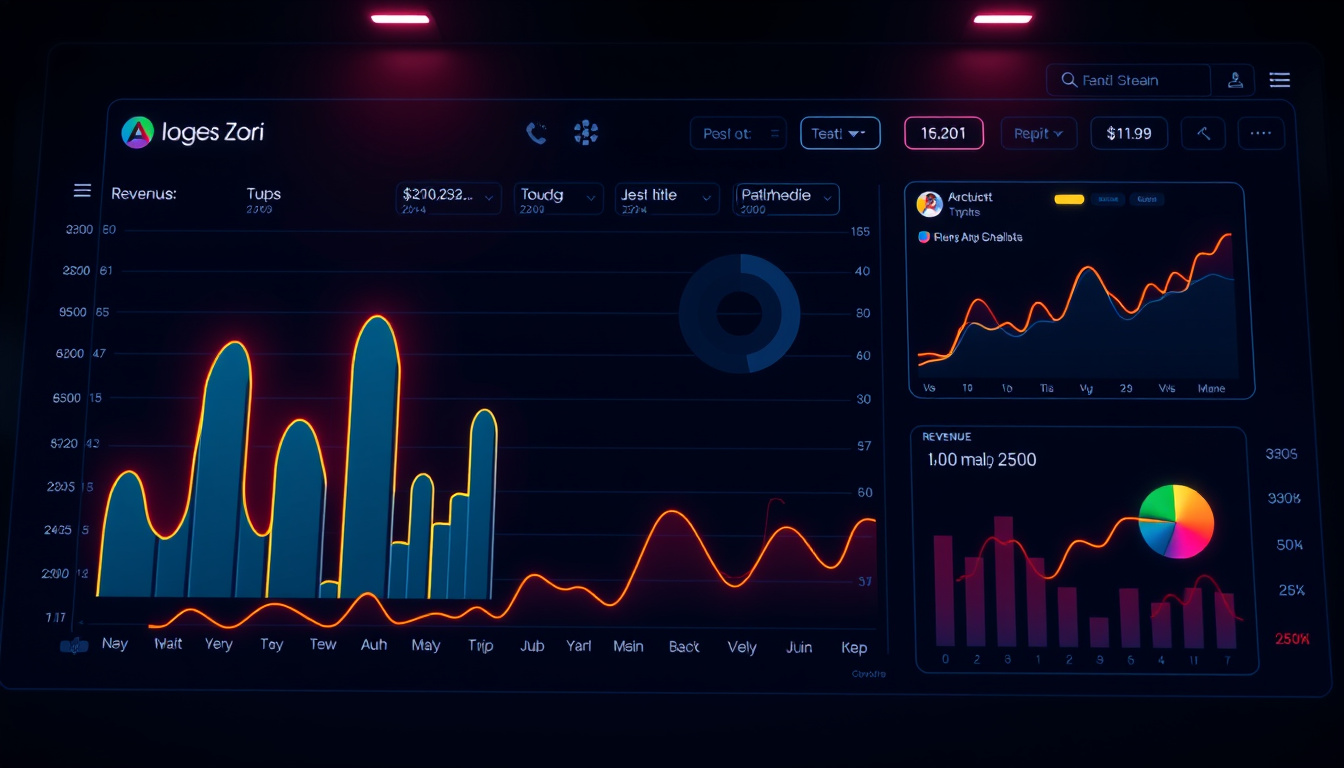Revenue Optimization Strategies That Skyrocket Your Business Growth Fast

In today's fast-paced marketplace, revenue optimization matters. It drives growth and steadies business paths. You set prices, you adjust sales, and you boost marketing—all to lift income and keep customers happy. Whether you are a startup or an established firm, clear revenue moves can shift your bottom line and speed growth.
This guide shows tested ways to raise profit, keep customers, and win against rivals. We use real data and smart pricing to give you steps you can start now.
What is Revenue Optimization?
Revenue optimization works by linking every step to boost income. It balances sales count and price. It refines operations and makes each customer more valuable. In short, revenue optimization means you use every tool—pricing, marketing, and customer care—to help your revenue grow.
Why Revenue Optimization is Critical for Fast Business Growth
Revenue optimization does more than measure money. It lifts growth by letting businesses:
- Increase profit margins without a cost hike
- Find hidden revenue chances
- Create offers that press customers to return
- React fast as market conditions change
- Bring sales, marketing, and finance work together
Good revenue moves help firms grow far quicker than chasing new customers alone. New customers cost more and may not stick.
Key Revenue Optimization Strategies to Skyrocket Your Growth
Here are smart revenue steps that leaders must use for fast growth:
1. Implement Dynamic Pricing Models
Dynamic pricing lets you change prices right away as demand shifts. It links price with competition, season, and market feel. This model lifts income by matching what buyers will pay.
• Airlines and hotels use it well, and now e-commerce, SaaS, retail, and services can, too.
• Price software tools can set new prices through real-time facts.
2. Segment Your Customers for Personalized Offers
Customer segmentation breaks your base into clear groups. This method ties demographics, buying ways, or likes to pricing and promos. It helps raise conversion and spends per sale.
• Grouping reveals customers who pay more for value.
• Personal offers boost satisfaction and loyalty.
3. Optimize Your Sales Funnel for Conversion
A smooth sales funnel ties each lead to purchase with fewer stops. It links each stage—from notice to buying—with clear steps. • Check conversion at every step with simple analytics.
• Use targeted emails and remarketing to nurture leads.
• Upsell and cross-sell inside your funnel to lift income per customer.
4. Leverage Data Analytics and Business Intelligence
Data forms the core of revenue moves. It ties sales, customer acts, and operations into clear insight.
• Use CRM and analytics tools to watch key numbers live.
• Find weak links in the sales chain or low-running items.
• Forecast future needs, then set stock and price accordingly.

5. Enhance Customer Lifetime Value (CLV)
Boosting what each customer brings over time is key for steady growth.
• Set up loyalty rewards for repeat buys.
• Keep in touch with custom messages.
• Use subscriptions where it fits to lock steady income.
6. Optimize Channel and Product Mix
Look at each sales channel and product to see which ties best to profit.
• Focus on high-margin items.
• Drop items that perform poorly.
• Use new channels to reach fresh markets.
Revenue Optimization Checklist: 7 Steps to Get Started Today
Use this clear checklist to shape your revenue move:
- Analyze your current income streams to find patterns that need work.
- Segment your customers using the data you have.
- Set clear revenue goals that match business aims.
- Test different pricing ideas, from discounts to dynamic pricing.
- Check your sales funnel for points that slow leads.
- Invest in tools that give instant data.
- Start customer programs that keep value high.
Case Study: How Dynamic Pricing Drove 30% Revenue Growth for an E-commerce Brand
A medium online retailer of home goods chose dynamic pricing. It used AI software to check competitor prices, stock, and buyer moves. Prices changed during the day, and special discounts met customer groups right. The result? A 15% rise in order value and a 30% jump in monthly income in six months.
Common Revenue Optimization Mistakes to Avoid
- Ignoring what customers say when you change prices.
- Making pricing too complex so buyers get confused.
- Relying only on discounts, which can cut margins.
- Failing to bring sales, marketing, and finance to work as one team.
- Not checking performance numbers on a regular basis.
FAQ About Revenue Optimization
Q1: What tools can help with revenue moves?
A1: Use price software like Pricefx, CRM systems like Salesforce for grouping, and analytics tools such as Google Analytics or Tableau. They gather and tie data to guide pricing, promos, and sales.
Q2: How does customer segmentation boost revenue optimization?
A2: Segmentation ties customer groups to custom pricing and messages. This method usually lifts conversion and the revenue per customer.
Q3: Can revenue optimization work for small firms?
A3: Yes, it scales well. Small businesses can start with simple tests, gather customer data, and then lift to advanced steps like dynamic pricing and lifetime value focus.
Expert Insight on Revenue Optimization
McKinsey & Company notes that firms using smart revenue tactics can boost revenue 2% to 7% and raise profit 5% to 10%. This shows that sharp revenue moves work as a growth lever from retail to tech.
Conclusion: Take Action and Watch Your Revenue Soar
Revenue optimization is a must for market leaders. With dynamic pricing, custom customer paths, clear data, and refined sales, you unlock hidden money streams and fuel fast growth. Study your income moves and start with the guide’s clear steps.
Do not let rivals win. Use these revenue moves now to lift profit, win more market share, and build a steady growth engine. Your path to fast growth starts with clear revenue optimization—step up and see your business change!